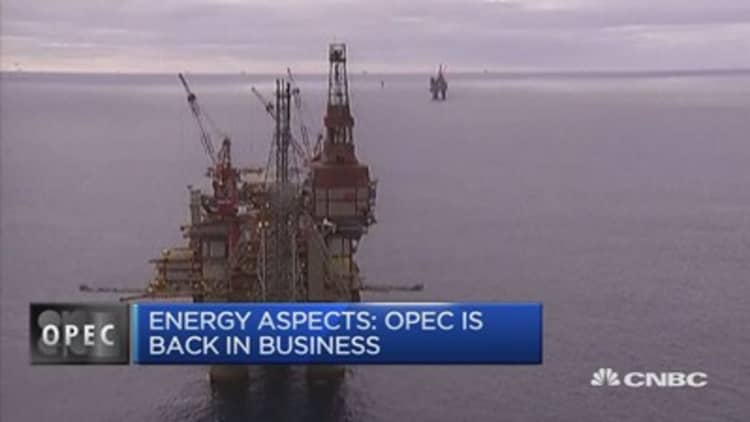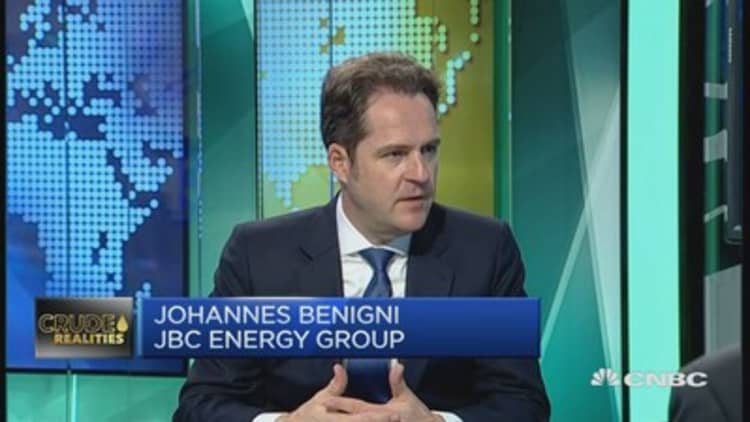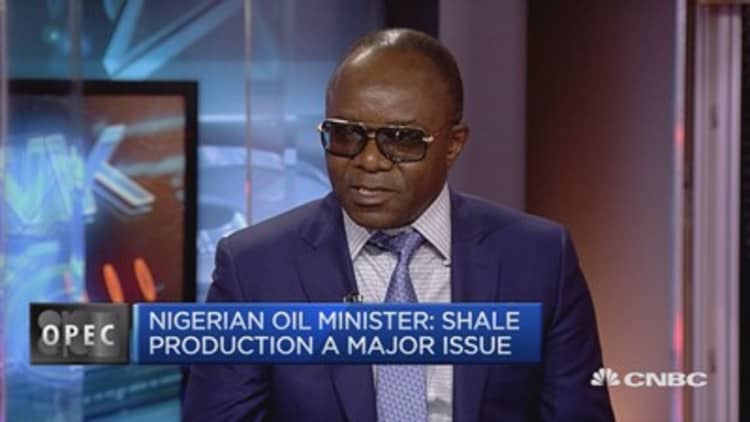
Oil rose by as much as 6.5 percent on Monday to an 18-month high after OPEC and some of its rivals reached their first deal since 2001 to jointly reduce output to try to tackle global oversupply.
On Saturday, producers from outside the Organization of the Petroleum Exporting Countries, led by Russia, agreed to reduce output by 558,000 bpd, short of the target of 600,000 bpd but still the largest contribution by non-OPEC ever.
That followed the Nov. 30 deal by OPEC to cut output by 1.2 million bpd for six months from Jan. 1, with top exporter Saudi Arabia cutting around 486,000 bpd to curb the supply glut that has dogged markets for two years.
Crude futures have rallied sharply, with U.S. futures gaining 23 percent since the middle of November as optimism that an agreement would be reached started to grow.

Brent crude futures were up $1.33, or 2.5 percent, at $55.66 per barrel by 2:36 p.m. ET (1936 GMT), having hit a session peak of $57.89, the highest since July 2015.
U.S. crude futures were up $1.33, or 2.6 percent, at $52.83 a barrel. They earlier touched $54.51, also a high going back to July 2015.
"Right now the market is kind of feeding on itself," said Gene McGillian, manager of market research at Tradition Energy in Stamford, Connecticut.
"The market could push another $1 to $2 up to $55, and Brent could go to about $60, but at that point there are some concerns that are going to start to cap the rally."
PVM Oil Associates strategist David Hufton noted that "as things stand today, no cuts have been made and production is in fact still rising." He said it was difficult to "justify the front-end price surge other than that is where the liquidity is and where speculative players, moving in herds, always prefer to place their bets."
For the deal to be effective, all parties must stick to their word.
Further, several of the non-OPEC countries are still increasing their production. Russia, for instance, does not expect to reach its target until April or May, and several other countries are expected to experience only natural declines, which will not necessarily affect the supply situation.

"We believe that the observation of the OPEC-11 and non-OPEC 11 production cuts is required to sustainably support... oil prices to our 1H17 WTI price forecast of $55 a barrel," Goldman Sachs said.
"This forecast reflects an effective 1.0 million barrels per day (bpd) cut vs. the 1.6 million bpd announced cut and greater compliance to the announced cuts is therefore an upside risk to our forecasts."
Goldman Sachs forecast full compliance would be worth an extra $6 per barrel to its price forecast.
Higher prices also raise the chances of other producers boosting output, particularly U.S. shale operators.
Rig counts have grown steadily in recent months in the United States. U.S. production remains about one million bpd below its peak of 9.6 million reached in 2015, according to U.S. Energy Department data.
"There are too many moving parts for OPEC's new policy to be sustainable in the long term. The strategy is bound to overshoot, in our view. leading to lower prices in the second half of next year," Barclays said in a note on Monday.

